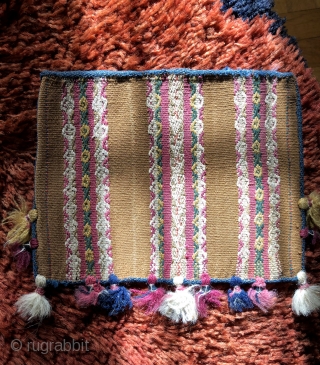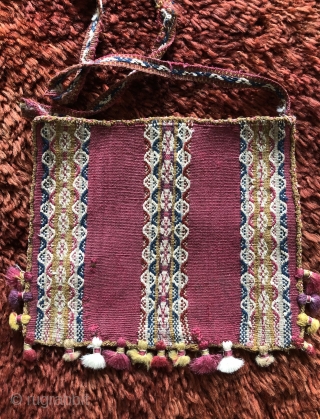Back
Three Andean coca bags woven by the indigenous Aymara people. The Aymara are a pastoral group of indians that live in the high Altiplano region of Bolivia at about 12,500 feet above sea level. They have been weaving very finely woven warp-faced textiles for millenia. The Aymara have traditionally breed alpacas and llamas for their long staple, lustrous fiber. When possible, they will also collect the remarkably fine and soft vicuna fiber from the wild cousins of their domesticated camelid herds. Vicuna is among the finest animal fiber in the world. The bag with the camel colored ground contains vicuna wool (technically a hair not wool). Vicuna wool is never dyed as the fiber is highly prized among the Aymara and can be recognized by its color and soft, downy texture.. All these bags have natural dyes and were made in the 19th century. Beautiful condition. Very affordable. Others available.
price:
inquire
- Home
- Antique Rugs by Region
- Category
- Profiles
- Post Items Free
- Albums
- Benaki Museum of Islamic Art
- Budapest: Ottoman Carpets
- Gulbenkian Museum
- Islamic Carpets. Brooklyn
- Islamic Textiles. Brooklyn
- Konya Museum: Rugs
- MKG, Hamburg
- MMA: Caucasian Carpets
- MMA: Mamluk Carpets
- MMA: Mughal Indian Carpets
- MMA: Ottoman Carpets
- MMA: Safavid Persian Carpets
- MMA: Turkmen Rugs
- McCoy Jones Kilims
- Ottoman textiles. Met
- Philadelphia Museum
- Rugs and Carpets: Berlin
- Seljuqs at the Met
- TIEM, Istanbul: Carpets
- V&A: Classical Carpets
- Vakiflar Carpets: Istanbul
- Baluch Rugs: Indianapolis
- Gallery Exhibitions
- Jaf an Exhibition
- Alberto Levi Gallery
- Andean Textile
- Christie's London: 2016
- Francesca Galloway
- HALI at 40
- ICOC Washington, DC 2018
- Jajims of the Shahsavan
- London Islamic Week April, 2018
- Mongolian Felts
- Navajo Rugs: JB Moore
- Persian Piled Weavings
- SF Tribal & Textile Art Show 2020
- SF Tribal 2019
- Sotheby's: C. Alexander
- Turkish Prayer Rugs
- Turkmen Main Carpets ICOC 2007














